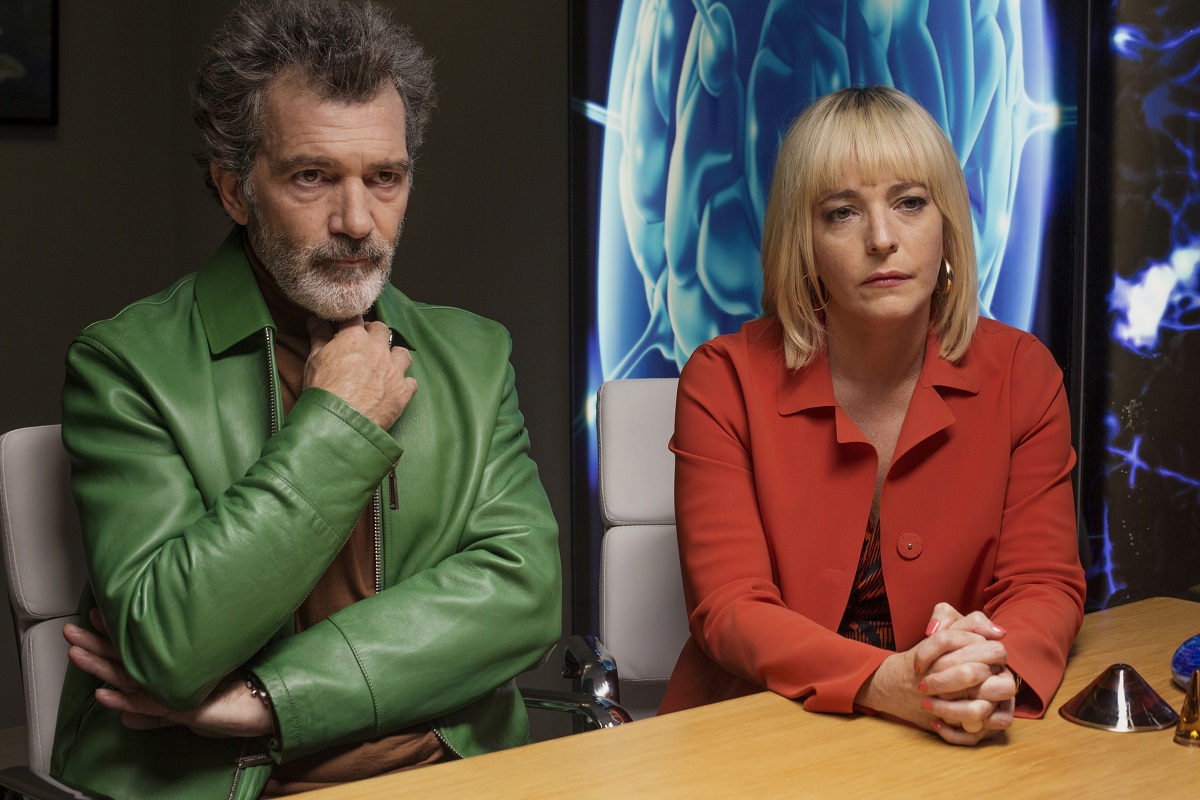The tricky thing about the roster of films competing for the Palme d’Or at Cannes is that each one looks like a winner on paper. Recognizable names like Almodovar and Jarmusch sparkle with promise, while the newcomers suggest the possibility of exciting discovery. It’s a good day when one of those discoveries proves to be the real thing. This week, Mati Diop, first-time feature director of “Atlantique” leapt into the film world’s limelight as a fully formed artist. By contrast, two competition films by established directors Pedro Almodovar and Jessica Hausner fell flat.
Anyone hoping that renowned Spanish director and two-time Oscar winner Pedro Almodovar’s new film “Pain and Glory” would represent his return to feisty form after the lackluster “Julieta” in 2016 will be disappointed with this shapeless drug-fueled look back on life by a fictional film director. The subject alone invites comparisons with Fellini’s “8 1/2,” which remains the gold standard for filmmaker confessionals. “Pain and Glory” is no “8 1/2;” regrettably, it’s not even a 4-1/2.
Director Salvador Malo (Antonio Banderas), a scruffy, haunted-looking guy with a stubbly beard, hasn’t shot a film in years. He suffers from a laundry list of ailments, all of them painful but none life-threatening. As the story unfolds, he is visited by memories from his childhood, often under the influence of one substance or another.
In his earliest memory, he sees himself, a very young boy, watching his pretty young mother Jacinta (Penelope Cruz) laugh with joy as she scrubs sheets at a river’s edge with other women. In another, the village priest recognizes that the boy Salva has a pure, clear voice, and singles him out to be a soloist in the school choir.
The adult Salva learns that the cinematheque in Madrid has restored his most famous film, “Sabor.” He is invited to present it, along with his lead actor Alberto Crespo (Asier Etxeandia), once his best friend. Salva hasn’t spoken to Alberto in thirty-two years, owing to the fact that the actor had interpreted this famous role differently than Salva had envisioned it.
The reunion of director and actor kicks off the running theme of addiction and drug use that runs through “Pain and Glory.” Alberto has a longtime addiction to smoking heroin, and Salva readily agrees to try it. As this plot has it, he immediately becomes an enthusiastic and regular user who begins to purchase it, and adds a menu of other daily drugs, including cocaine, to his routine. Very late in the film, this is all ascribed to his desire to ease his back pain. Frequent scenes of drug use through a variety of ingestion methods become tedious and repetitive.
Salva is brought face to face with another figure from his past, Federico (Leonardo Sbaraglia), the early love of his life. This relationship also, is bound up in a history of drug use, but it was Federico who doomed it through his heroin use. Almodovar begins to suggest that the concept of addiction applies also to love in Salva’s case. The two men have an affectionate reunion, but Federico, who now lives in Argentina, lives a straight life with a female partner.
Spotted throughout “Pain and Glory” are more visions of the director’s childhood and past. A handsome workman stripping to wash up in Salva’s mother’s kitchen gives the little boy his first revelatory and arousing glimpse of the naked male body. Later memories involve the adult Salva, now a successful film director, in intimate conversations with his elderly mother (Julieta Serrano).
The interactions between middle-aged son and aged mother are among the few scenes in the film that have any emotional resonance. Jacinta opens a tin box of little treasures and shows him the rosary that she wants laced through her fingers in the coffin, and the plain black scarf she wants placed on her head.
In all, “Pain and Glory” is a thudding, graceless film that lacks the fleet sense of wit and the narrative cohesion that marks Almodovar’s best work. It has a thrown-together feel, as if, lacking a real story idea, the director assembled a jumble of notes, and trusted it would all work.
Easing the pain of living with a little help from an external source turns out also to be the theme of Austrian director Jessica Hausner’s competition entry “Little Joe,” her first film in English. Hausner is known for films including “Amour Fou” (2014), and “Hotel” (2004), conveying a sense of directorial precision through a tightly controlled acting style and production design.

“Little Joe” is about a genetically engineered plant that is created to emit a mood-enhancing scent. It is designed to make a fortune for the company that plans to rush the blooming product into an international market. Alice (Emily Beecham) is a scientist with a specialty in plant breeding. She is a relatively new employee of a high-tech corporation, where she looks to become a star through her innovative work. A divorced mother who has custody of middle school-aged son Joe (Kit Connor), she names her new experimental creation after the boy, and gives him one that she sneaks out of the lab.
The plant Little Joe consists of one long thick stem reminiscent of a water lily, terminating in a spiky puffball of a bright red-orange flower. The plant responds favorably to attention and the human voice, more of a pet than an inert houseplant. When treated well, Little Joe releases a cloud of scent that brings on a sense of happiness and well-being in the person who inhales.
An incident in which senior lab employee Bella’s dog appears to suffer a violent behavioral change after accidentally inhaling the scent raises an alarm. This is ascribed to Bella’s history of mental illness by one and all, but seeds of doubt are planted when Alice begins to notice behavior changes in her son Joe, who grows hostile and unaffectionate.
More complications and alarming clues develop, suggesting that Little Joe emits a virus capable of altering the structure of the human brain. Emily begins to fear the worst. Her coworkers are either under Little Joes’s influence or are blinded by the thought of the profits to be made. Strangely enough, almost every character in the film has gotten a whiff of Little Joe, whether accidentally or on purpose. Only Emily, the plant’s creator, has somehow managed to avoid it.
“Little Joe” is an intricately calculated, bloodless film whose plot sounds far more intriguing than Hausner has succeeded in making it. With a plot full of holes and inconsistencies, the film relies heavily on her schematic color theme in the production design. Red is the film’s signature color, starting with Little Joe’s blossom, but represented as a significant highlight in every scene. All other colors, from walls and furniture to lab coats, are limited to a mint green palette.
The film’s acting style ranges from stilted to robotic. The limited range of expression is typical of Hausner’s work, as is the controlled production design. What’s lacking here is a spark of life that animates these ingredients as successfully as in her better films, like “Amour Fou.” “Little Joe” is a creation that could stand a bit more lab time before coming to market.












